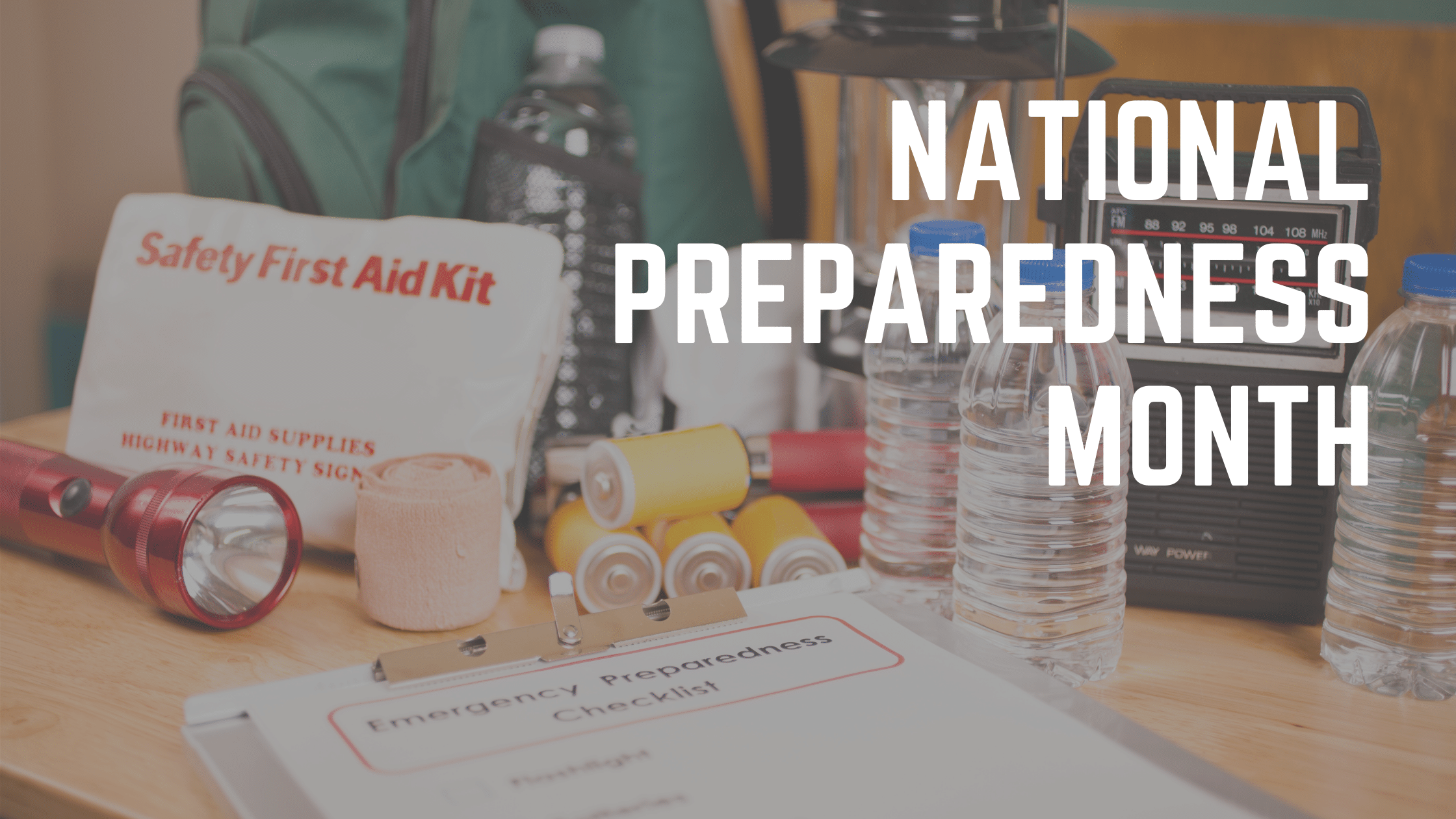 September is National Preparedness Month and is recognized to promote family and community disaster planning. As our nation continues to respond to COVID-19, there is no better time to begin your preparedness plan. The City of Irving has an emergency preparedness booklet on their website customized just for Irving residents and potential emergencies they may face. This year, National Preparedness Month focused on four things you can do to help navigate potential emergencies.
September is National Preparedness Month and is recognized to promote family and community disaster planning. As our nation continues to respond to COVID-19, there is no better time to begin your preparedness plan. The City of Irving has an emergency preparedness booklet on their website customized just for Irving residents and potential emergencies they may face. This year, National Preparedness Month focused on four things you can do to help navigate potential emergencies.
Make a plan
Sit down with your family and discuss or create an emergency plan. First, you’ll need to know what emergencies could affect your area. North Texas is prone to tornadoes, severe storms, heat and flooding. Don’t forget to create a fire evacuation plan too. Remember to sign up for the City of Irving’s alert system to know when weather watches and warnings are issued. It is also recommended that your family makes a plan of how you all will reconnect if you’re separated and establish a family meeting place that is easy to find and familiar. Pets are part of the family too, make sure they are included in your plans.
Build a kit
After or during an emergency you may need to survive on your own for a few days. A disaster supply kit consists of the basic items your family would need to get by.
A basic emergency supply kit could include the following recommended items:
- Water (one gallon per person per day for at least three days, for drinking and sanitation)
- Food (at least a three-day supply of non-perishable food)
- Weather radio
- Flashlight
- First aid kit
- Extra batteries
- Whistle (to signal for help)
- Dust mask (to help filter contaminated air)
- Plastic sheeting and duct tape (to shelter in place)
- Moist towelettes, garbage bags and plastic ties (for personal sanitation)
- Wrench or pliers (to turn off utilities)
- Manual can opener (for food)
- Local maps
- Cell phone with chargers and a backup battery
In the Spring of 2020, the Centers for Disease Control began recommending that people include additional items in their kits to help prevent the spread of coronavirus, other viruses and the flu. These items include:
- Cloth face coverings, soap, hand sanitizer and disinfecting wipes to disinfect surfaces
- Prescription medications
- Non-prescription medications such as pain relievers, anti-diarrhea medication, antacids or laxatives
- Prescription eyeglasses, contact lenses and contact lens solution
- Infant formula, bottles, diapers, wipes and diaper rash cream
- Pet food and extra water for your pet
- Cash or traveller’s checks
- Important family documents such as copies of insurance policies, identification and bank account records saved electronically or in a waterproof, portable container
- Sleeping bag or warm blanket for each person
- Complete change of clothing and sturdy shoes
- Fire extinguisher
- Matches in a waterproof container
- Feminine supplies and personal hygiene items
- Mess kits, paper cups, plates, paper towels and plastic utensils
- Paper and pencil
- Books, games, puzzles or other activities for children
It’s also recommended to have an emergency kit in your vehicle. This kit could include:
- Blankets
- Warm clothing
- Jumper cables and tools
- Bottled water
- Canned food
- First aid kit
- Flashlight and batteries
- Traction mats or chains
- Shovel
- Emergency prescription medication
Prepare for disasters
To limit the impacts that disasters have your family, know the risk of disasters in your area and check your insurance coverage. It is also recommended that you learn how to make your home stronger in the face of storms and other common hazards and act fast if you receive a local warning or alert. Rehearse your evacuation plan and remind everyone of where the family meeting spot is.
Teach your kids about preparedness
Teach your kids about emergencies, what to do if the family gets separated and how to prepare. The National Preparedness Month website has plenty of exercises and tools for both teens and young kids to teach them about emergency preparedness.
For more information visit ready.gov and The City of Irving’s Office of Emergency Management webpage.


